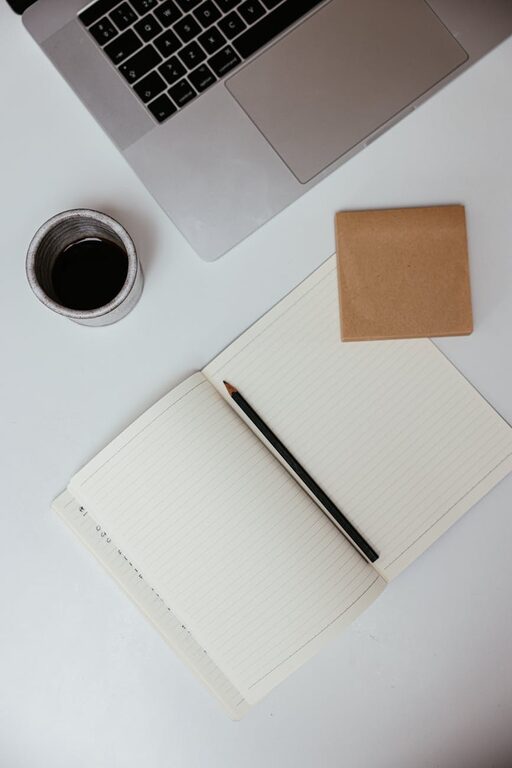
Choosing the right notebook might seem like a simple task, but anyone who’s ever stood in the stationery aisle knows it can quickly become overwhelming. With so many sizes, styles, paper types, and bindings available, picking a notebook you’ll actually use requires a bit of thought. Whether you want a journal for personal reflection, a planner for daily tasks, or a sketchbook for creativity, the perfect notebook should suit your habits and preferences.
In this post, we’ll guide you through the key factors to consider so you can find a notebook that inspires you to write, plan, or sketch regularly.
Why Choosing the Right Notebook Matters
A notebook can do more than just hold your notes. It can boost your productivity, help you organize your thoughts, and encourage creativity. On the other hand, a notebook that doesn’t meet your needs can end up forgotten on a shelf.
To avoid that, it’s important to consider how you plan to use the notebook: Will it travel with you? Do you prefer writing on lined or blank paper? How much space do you need for your notes? Answering these questions will help you narrow down your options.
Step 1: Identify Your Purpose
Before buying a notebook, think about why you want one:
– Daily planner: Keep track of appointments, to-do lists, and goals.
– Journal or diary: Reflect on your thoughts and experiences.
– Creative sketchbook: Draw, doodle, or brainstorm ideas.
– Work or school notes: Write lectures, meetings, or research.
– Recipe or project book: Collect recipes or track progress on hobbies.
Your purpose influences size, paper type, and layout choices.
Step 2: Choose the Right Size
Notebooks come in a variety of sizes. Common options include:
– Pocket size (A6 or smaller): Easy to carry, perfect for quick notes or on-the-go ideas, but limited space.
– Medium size (A5 or similar): Balances portability with enough room to write comfortably; popular for planners and journals.
– Large size (A4 and up): Ideal for extensive notes, sketches, or detailed projects but less portable.
If you plan to carry the notebook everywhere, a medium or pocket size is best. For desk use, larger sizes give your writing space.
Step 3: Pick the Paper Type and Layout
Paper quality and layout affect your writing experience:
– Lined paper: Great for structured note-taking and journaling.
– Blank paper: Best for sketching and creative freedom.
– Dotted or grid paper: Perfect for bullet journaling, diagrams, or mixed writing and drawing.
– Paper weight: Measured in GSM (grams per square meter); heavier paper reduces ink bleed-through. Around 80-100 GSM is typical for writing notebooks.
If you use ink pens or markers, opt for thicker paper. For pencil or ballpoint pen, standard paper works fine.
Step 4: Consider the Binding Style
Binding determines how your notebook opens and how durable it will be.
– Spiral binding: Lies flat and allows easy page turning but may wear out with heavy use.
– Sewn or stitched binding: Durable and often lies flat but less flexible than spirals.
– Glue binding (perfect binding): Sleek and lightweight, but pages might fall loose over time.
– Hardcover or softcover: Hardcovers protect pages better; softcovers are lighter and more flexible.
Choose based on how you want to use and carry your notebook.
Step 5: Look for Additional Features
Some notebooks include extras that can enhance your experience:
– Bookmarks or ribbons: Useful for marking your place.
– Elastic closures: Keep your notebook securely closed.
– Inner pockets: Store notes, receipts, or stickers.
– Pre-printed layouts: Calendars, habit trackers, or prompts can be helpful.
– Perforated pages: Easy to tear out sheets.
Think about features that will support how you work.
Step 6: Test It Out in Person if Possible
If you can, visit a store to feel different notebooks. Open the pages, try writing on the paper, and see how the notebook feels in your hands and bag. The tactile experience can reveal what suits you best.
Step 7: Set a Budget
Notebooks vary widely in price, from inexpensive to premium artisanal options. Decide what fits your budget but remember that investing in a notebook that motivates you can be worth the cost.
Tips to Make Sure You'll Use Your New Notebook
– Personalize it: Add stickers, doodles, or a cover design.
– Keep it accessible: Leave it where you write often or carry it with you.
– Start small: If journaling or planning is new to you, set realistic goals.
– Combine digital and analog: Use your notebook alongside apps.
– Use it regularly: Make writing or planning a daily habit to build momentum.
Final Thoughts
Choosing a notebook is about finding a balance between form and function. By clarifying how you’ll use it, selecting the right size and paper, considering the binding, and throwing in a few personal touches, you’ll create a tool that not only organizes your thoughts but also encourages you to use it often.
Remember, the perfect notebook is the one that fits your lifestyle and invites you to come back to its pages again and again. Happy writing!
